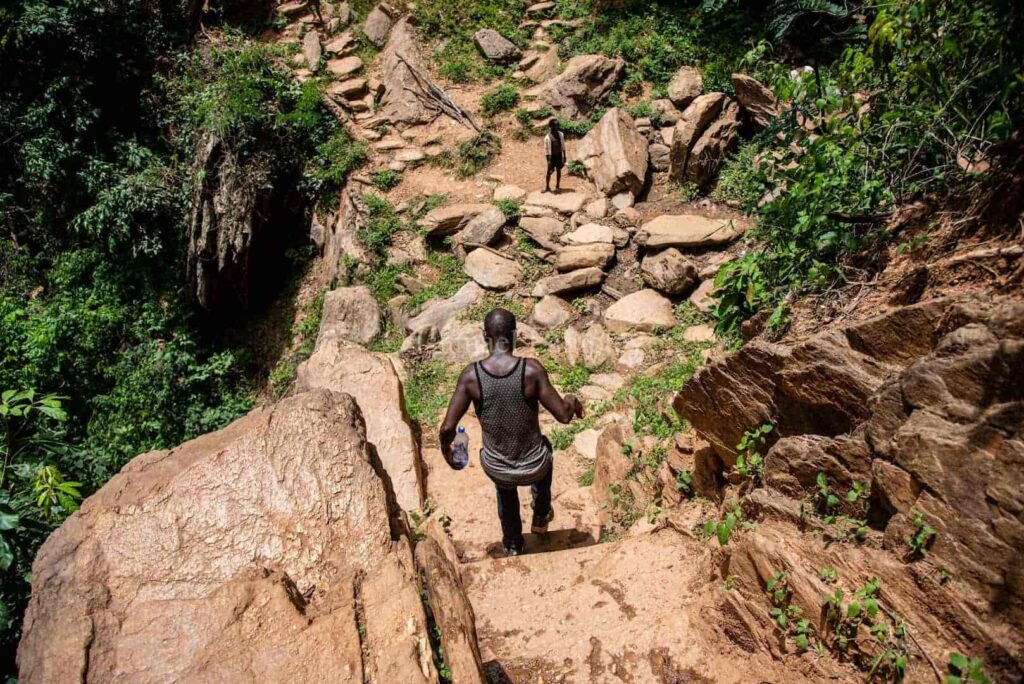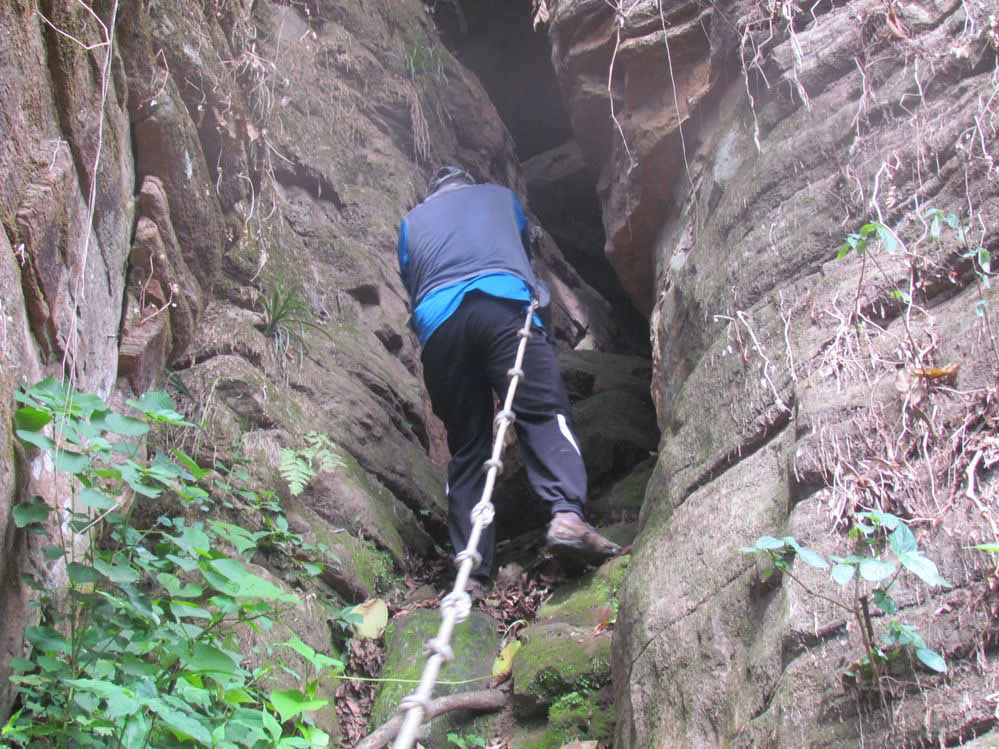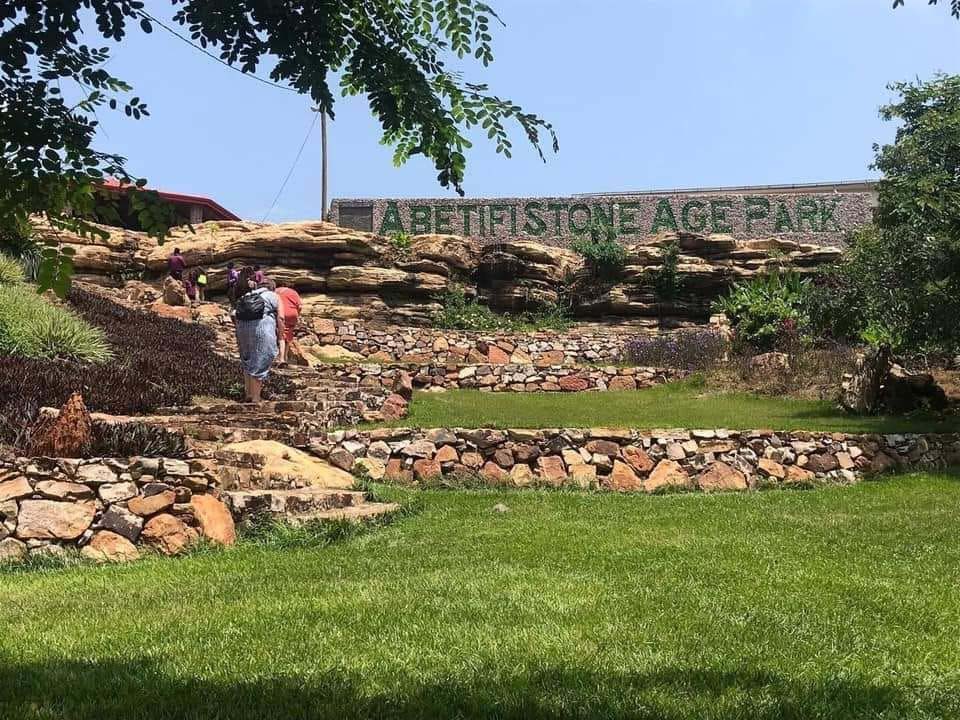“Having a Geopark in Ghana will be an awesome experience and will benefit the nation enormously. The Geopark system inculcates a sense of ownership in the local people. Also, it provides valuable education on the geo-heritage and the natural resource available to them, including sustainable ways of development and economic benefit resulting from nature-based tourism” – AYED Ghana.
Ghana Geopark Experience is a project to explore and develop Ghana’s existing natural resources with significant geological, natural, and cultural heritage into a UNESCO Global Geopark.
The African Youth Empowerment and Development Ghana, an NGO, visited and participated in the 1st Summer University Course on Geopark, Sustainable Regional Development, and Healthy Lifestyles organized by the University of Tras-os-Montes & Alto Douro and UNESCO Chair on Geoparks Portugal in 2017. The experiences and network established during the training that followed led to our first project in 202,1, dubbed Natural Resource, Sustainable Development, and Healthy Lifestyles. This project allowed us to visit and interact with lots of the communities and sites. Collaborations with relevant institutions and professional individuals committed to Eco-tourism were established. Ghana Geopark Experience 2025 was subsequently established and launched with the mandate to coordinate the establishment of a managerial body, gather information, and provide opportunities for training and networking.
Several potential geological, national parks, and existing tourist areas are being studied under this initiative. Some of these sites include

Located in the Oti Region.

Geo-guide Trail.




It is significant to note that this project is linked to reducing high poverty in the area and contributes to the achievement of the Global Goals for Sustainable Development particularly
Goal 1 - No Poverty, Goal 2 - Zero Hunger, Goal 3 - Good Health & Well-being, Goal 11 – Sustainable Cities and Communities & Goal 17 – Partnership for the Goals.This village is over nine centuries old. Shiare is the paramount seat of the Atwode people and is affectionately called the ‘hanging village’ as a result of its architectural design. The houses are virtually built into the mountain, making them look as though they are hanging. The name ‘hanging village’ was given to them by Europeans due to how far apart they were from the rest of the people within the region many years ago. The Shiare people are predominantly farmers, and they produce natural honey.

Situated in Kyabobo Park, it is about 30 meters high. There is the upper fall and the lower fall and the accompanying singing of birds, shrills of monkeys, and cries of animals, and the forest canopy gives tourists a wonderful sense of satisfaction. The waterfall serves as the only source of water for the community, and it’s about 40 40-minute walk from the Shiare village.
The Two “Breast Mountains” viewed from the Nkwanta Township are a welcome signal to the park. On top of these mountains, a panoramic view of the underlying plains, villages, and the Volta Lake offers the climbers a unique impression of the natural beauty of the park and other parts of Ghana. There are also camping sites in the park to suit the taste of lovers of nature and Eco-tourism.
Kyabobo National Park (pronounced CHAY-a-bobo), a newly created Park in the Atwode traditional area, is located in the Nkwanta district of the Northern Volta Region. This park, which covers an area of 359.8 km,² is found in the Dry semi-deciduous forest zone and has both forest and savanna species of plants and animals. Its forests contain the nationally endangered endemic tree Talbotiella Gendtii.
The reserve was established in 1997. Ghana’s second-highest mountain, Mount Dzebo, is contained within the park and offers visitors an impressive view of Lake Volta. The National Park is recognized internationally as a unique mountainous conservation area with stunning views and well-protected wilderness.
Animals common to the park include Buffalo, Kob, Warthog, Aardvark, and Baboon. Threatened species of animals, with adequate protection, may recover, including Lion, Elephant, Bongo, Reedbuck, and Hartebeest, which may recolonize the Park from the adjacent Fazao National Park in the neighboring country Togo.
Animals common to the park include Buffalo, Kob, Warthog, Aardvark, and Baboon. Threatened species of animals, with adequate protection, may recover, including Lion, Elephant, Bongo, Reedbuck, and Hartebeest, which may recolonize the Park from the adjacent Fazao National Park in the neighboring country Togo.
The park offers challenging multiple-day hikes through its rugged terrain, mountain biking, game viewing hides, shrines, and sacred gro,ves as well as interesting cultural experiences.